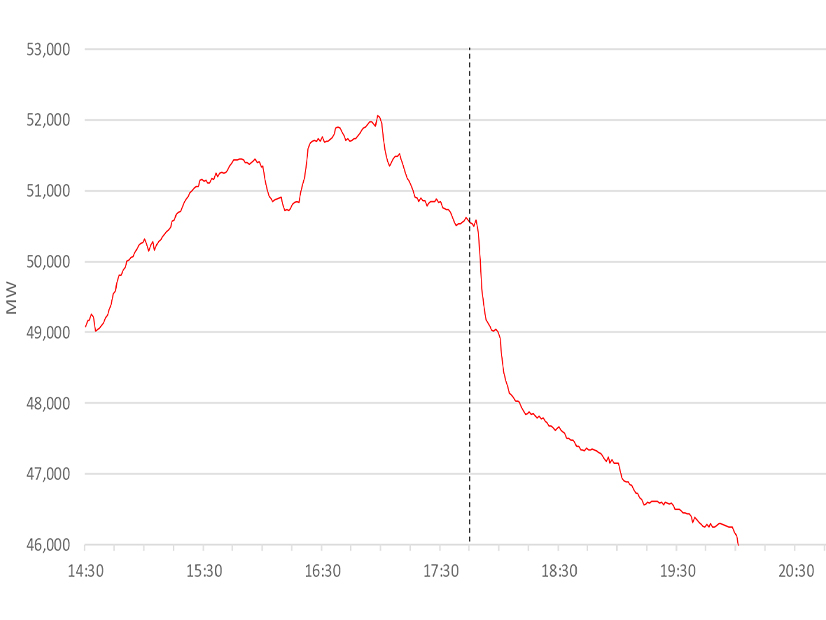
CAISO got through September’s record-setting Western heatwave without blackouts by importing electricity, calling on the public to conserve energy and coordinating with utilities and government agencies, the ISO said in its 2022 Summer Market Performance Report published Wednesday.
During the 10-day stretch of triple-digit temperatures, from Aug. 31 to Sept. 9, CAISO experienced unprecedented demand, reaching a new high of more than 52 GW on Sept. 6. Demand in CAISO’s Reliability Coordinator footprint, which covers much of the Western Interconnection, set a record at more than 130 GW.
“The heat wave of September 2022 was one of the most challenging events in the history of the ISO grid,” CAISO CEO Elliot Mainzer said in a news release. “During events like these, it is important to carefully and transparently examine what went well and to identify issues to address and lessons learned that can be carried forward into future operations.”
In the report, CAISO said new resources procured since the rolling blackouts of August 2020, when demand reached 46 GW, have bolstered reliability. The ISO’s territory has added more than 3,500 MW of lithium-ion batteries in the past two years to store the ample solar power produced in the daytime in California.
Blackouts and near misses in the last three summers occurred during heat waves when solar power ramped down in the evening, but demand remained high from air conditioning use.
CAISO cited “enhanced coordination, awareness and communications internally and with neighboring balancing authority areas,” including participants in the ISO’s Western Energy Imbalance Market, as another reason it was able to keep the lights on. The increased coordination extended to investor- and publicly owned utilities, the California Public Utilities Commission, the state Energy Commission and the governor’s office, it said.
Market enhancements enacted the past two years helped, too, the report said. CAISO has reworked its scheduling priorities, beefed up its resource sufficiency evaluations and adopted “market pricing designed to incentivize generation during periods of high demand,” it said.
The major factor in avoiding blackouts on Sept. 6, the most strained day of the year, was an emergency text message sent out to 27 million cell phones by the Governor’s Office of Emergency Services urging consumers to conserve electricity in the face of imminent blackouts.
When the text message went out at 5:45 p.m., CAISO already had declared a stage 3 energy emergency and told utilities to arm for load shed, but it had not given the final order to start rotating outages.
Within 20 minutes of the alert, demand plummeted by 2,385 MW, to 48 GW, narrowly avoiding blackouts.
Imports from the Pacific Northwest and parts of the Desert Southwest, where the heat was less extreme, also played a large role in maintaining grid reliability, CAISO said.
“This included net imports of more than 6,500 MW during net peak on September 6 as well as an additional 1,000 MW from WEIM transfers,” the report said. “The ISO both received emergency assistance energy and provided it to other balancing authority areas experiencing stressed system conditions.”
Average daily electricity prices soared to $600/MWh with prices topping $2,000/MWh in some parts of the state. In comparison, the average locational marginal price for September was $106 MWh, it said.
Lessons Learned
The ISO said it learned lessons from the crisis that included the need to improve the use of batteries in the real-time and day-ahead time frames to optimize dispatch and ensure they are used most effectively in heat waves.
“The high prices experienced during the heat wave presented new scenarios for the ISO to learn about the complexities and challenges of managing battery state-of-charge,” the report said.
Batteries that bid above $150/MWh to charge during the day were insufficiently charged when they were needed at nightfall because of a software glitch, CAISO said.
“Despite this, ISO operators were able to position storage resources during the September 2022 heat event to meet net-peak requirements by leveraging minimum state-of-charge market functionality that was implemented as part of a package of 2021 summer readiness enhancements,” it said. “The ISO has now fixed the software issue.”
Another software problem “unintentionally curtailed higher-priority exports … while allowing lower-priority exports to flow,” CAISO said. “Although the ISO largely caught and reversed the error in high-priority curtailments, it deployed a software upgrade on Oct. 13 to ensure the appropriate export curtailment order is followed going forward.”
In addition, there was under- and over-counting of capacity in the WEIM’s resource sufficiency evaluation that resulted in CAISO failing the test two times on Sept. 6 instead of the six times it should have failed, the report said.
Because of the counting errors, “transfers into the ISO were limited, but not material,” it said. “This is because the transfer limits were well above the actual available transfers of 1,000 MW from the WEIM, so transfers into the ISO were not restricted.”
CAISO said it has corrected some of the counting problems and is exploring additional fixes.
The ISO has scheduled a stakeholder call for Nov. 17 to review the analysis and answer questions.
